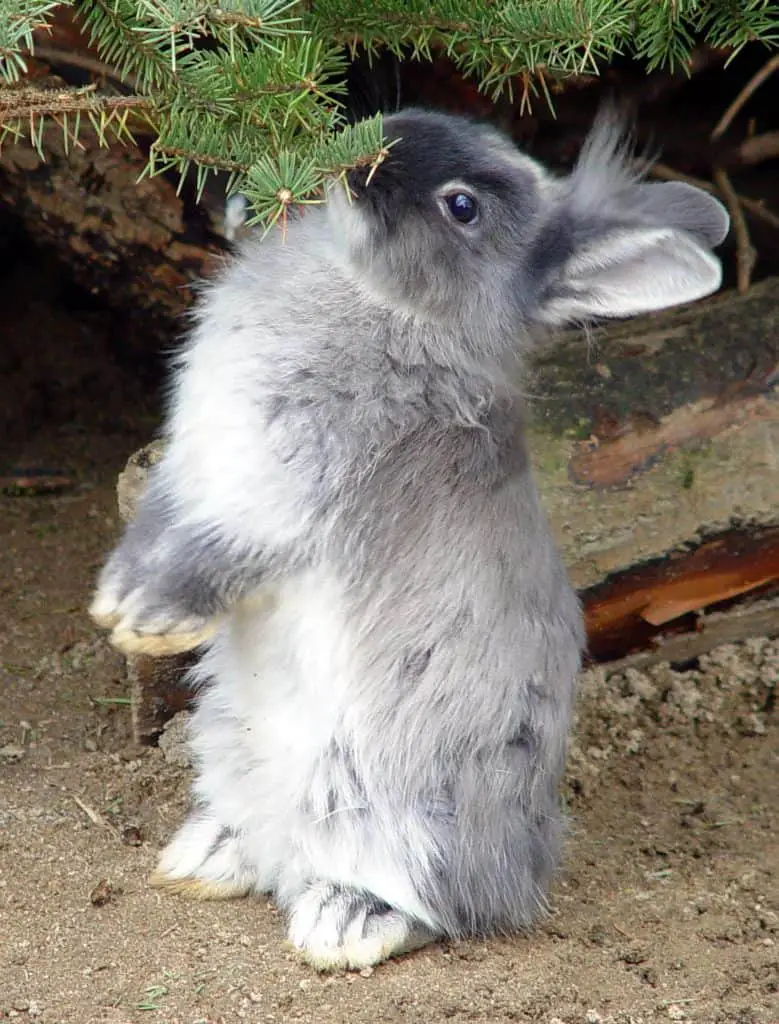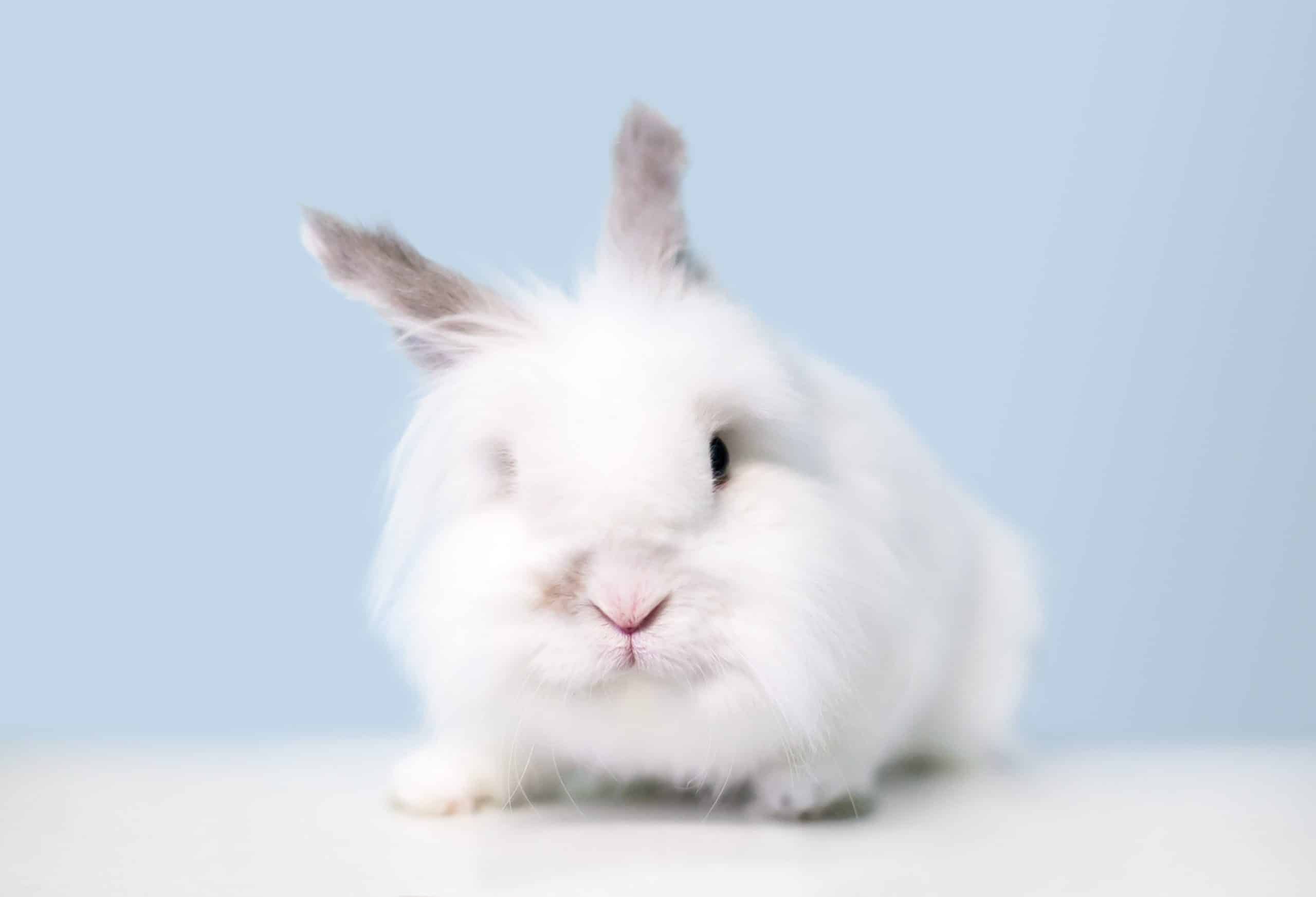The mixing of different rabbit varieties has given rise to new and diverse breeds. One of these new breeds is the Jersey Wooly. If you are a rabbit lover or you are interested in knowing and getting more information about this breed and how to care for Jersey Wooly rabbits, you have come to the right place.
Jersey Wooly rabbits are generally considered a luxury breed. They enjoy great popularity in exhibitions and as pets. This beautiful breed of rabbits characterizes by its friendly, docile, and loving character. The Jersey Wooly is also known as the No-Kick Bunny, as they are gentle, sweet, and have a steady temperament.
Which are its Origins?
This breed was recently developed in the 1970s in New Jersey and created specifically for its luxurious coat. The Jersey Wooly comes from a cross between a Netherland Dwarf and a French Angora, and Bonnie Seeley was the person who created this mix. The result was a beautiful rabbit with a wool coat.
Seeley first presented it at the American Rabbit Breeding Association (ARBA) Convention in 1984. But it was not until 1988 that the association recognized it as a breed.
However, at present, the British Rabbit Council does not conceive of it as a breed, as it includes it in the Netherland Dwarf range.
Let’s Meet the Jersey Wooly Bunnies
The Jersey Wooly belongs to the group of smaller rabbit breeds, as they have a compact body, and their mature weight is usually less than four pounds, making it a dwarf breed. These are some of their main characteristics of Jersey Wooly rabbits:
- Like the Netherland Dwarf, their heads are small and square-shaped with a flat nose, which is why we also know this breed by the affectionate name of Cup Head.
- Their life expectancy is 7 to 10 years.
- They have a layer of short hair around their face and ears, but not on their body, as their hair from the neck down has a long, dense, soft, woolly appearance and can measure up to 10cm.
- They have small, compact, and rounded bodies.
- Their ears are small and upright and measure between 3 and 4cm.
- The variety of colors in which we can find this breed is incredible. The ARBA recognizes six different color groups: Agouti, Broken, Self, Shaded, AOV, and the Tap Pattern. Each group has an infinite number of color varieties.
Undoubtedly, the Jersey Wooly is a real cutie, which is why they are so popular as pets. But what about their temperament?
The Charming Bunny
These rabbits are very affectionate and playful. Most Jersey Woolies and their crossbreeds are very friendly and curious and tend to be sociable with other pets. These characteristics turn them into excellent pets.
They are usually very curious, so they won’t hesitate to explore your home over and over again. These little furballs are very social and playful and require a lot of attention and time for playing and companionship.

How to Care for Jersey Wooly Rabbits?
Even though this breed is relatively easy to care for, there are certain aspects that we should offer more attention so that our rabbit has a better quality of life. Now we will discuss the essential cares that Jersey Wooly rabbits need.
Fur
Due to their long fur, the Jersey Wooly requires more grooming than other short-haired rabbits. These rabbits need extra time for grooming as well as special diets.
A Jersey Wooly needs their coat brushed at least twice a week to keep it clean and tangle-free. Adult rabbits will need extra grooming once Spring arrives, which is why we also know this time of year by the common name of molting season.
Unlike other rabbit breeds, like the Angoras, the Jersey Woolly rabbit does not require any trimming or clipping to maintain its wool.
If your pet’s coat gets dirty, simply clean it with a damp cloth as rabbits should never be given a full bath from head to tail. We do not suggest full-body baths, as this causes them too much stress and may lead to heart failure and hypothermia.
Vulnerability
Owing to their tiny size, Jersey Wooly rabbits are usually very fragile. Always handle them very carefully as any falls could cause them serious injuries.
You should always supervise your children when they are handling a rabbit, especially one so small. These rabbits have very delicate bones that can fracture easily, therefore we must hold them firmly to avoid the rabbit from jumping and suffering the risk of falling.
The Cage
Finding a spacious and comfortable enclosure for this breed of rabbits should not be a problem, as they are so small. The truth is that the bigger the cage, the better as it will provide more comfort. The hutch will make the perfect shelter in which they can sleep.
We should keep in mind that the rabbits should not remain in the cage for long, but they should be able to live in the house and even in the garden if we have a protected area where they can run and explore at their leisure. Rabbits can get easily depressed if they have to remain in a cage for a long time.
However, you should remain alert to predators when your rabbit is outdoors, as bigger animals may harm such small rabbits. Because of its small size, the Jersey Wooly should be an indoor rabbit.
Building a Suitable Enclosure
The enclosure should be made of wire and have a plastic bottom that should be covered with highly absorbent bedding to prevent their waste from coming into contact with their fur. For this purpose, we can provide materials such as grass hay or blankets made of natural fibers, so that their paws do not come in contact with residues. For this same reason, make sure to clean the enclosure frequently, and change the bedding every 2 to 3 days.
Besides, your pet needs a place to relieve itself. A good option is to provide a litter box within its cage.
Nutritional Needs
On many other occasions, we have emphasized the kind of food we must provide to our rabbits. The diet of a Jersey Wool is like the diet of any other rabbit. It must have an unlimited amount of good quality hay. The remainder should consist of a combination of pellets, healthy green vegetables, and fruits.
Only give them foods that are high is sugars and carbs about twice a week (fruits fall in this category). They could be a prize or special treat as too much of them can cause serial health problems. The only difference which exists between a long-haired rabbit and a short-haired rabbit as far as feeding is concerned is the control of intestinal occlusions.
Intestinal Occlusions
Like cats, rabbits are extremely clean creatures and regularly groom themselves by licking their fur. However, the main difference between them is that cats can regurgitate the wool they ingest, while rabbits do not have that ability. Consequently, the ingested wool accumulates inside their stomachs, causing occlusions and loss of appetite.
Although the Jersey Wooly rabbit may not be as susceptible to wool blockages as other furry rabbits, they can still be at risk. To avoid this, make sure you offer food that is rich in fiber and an unlimited amount of fresh, clean water daily.
Another way to diminish intestinal blockages is to help them with their grooming. We can use a special comb or brush, that can help us to clean them and to eliminate and get rid of a large part of the dead hair. In this way, the excess fur will not end up in their stomachs.
Additional Care
These are other aspects regarding our rabbits to which we must remain vigilant:
- Both the nails and teeth of the rabbit keep constantly growing throughout their lifetime. Make sure to cut their nails from an early age, so they are familiar with the process early in their life.
- We must provide them with wood or other gnawing supplies so they can keep their teeth healthy and in good shape.
- Jersey Wooly rabbits are a breed that is prone to cancer. It is advisable to have them neutered or spayed to avoid the risk of cancer.
- Be sure to make regular visits to your vet. As it happens with many other pets, you should try to deworm your bunny twice a year. They are also susceptible to different illnesses, thus you should keep their vaccinations up to date.
Because these bunnies have such a long coat, sometimes we fail to notice some injuries. With this variety of rabbits, it is important to touch them and carry them often to be able to detect knots in their fur or other anomalies. This way, if we find anything abnormal, we will be able to give treatment in time.
If you learn how to take care of your Jersey Wooly bunny properly, you will allow it to enjoy a happy and healthy life in your home. These lovely rabbits love to spend a lot of time with their human handlers and you can pick them up and pet them as often as you want as they also enjoy it. You’re sure to cultivate a beautiful relationship with your furry little friend.

